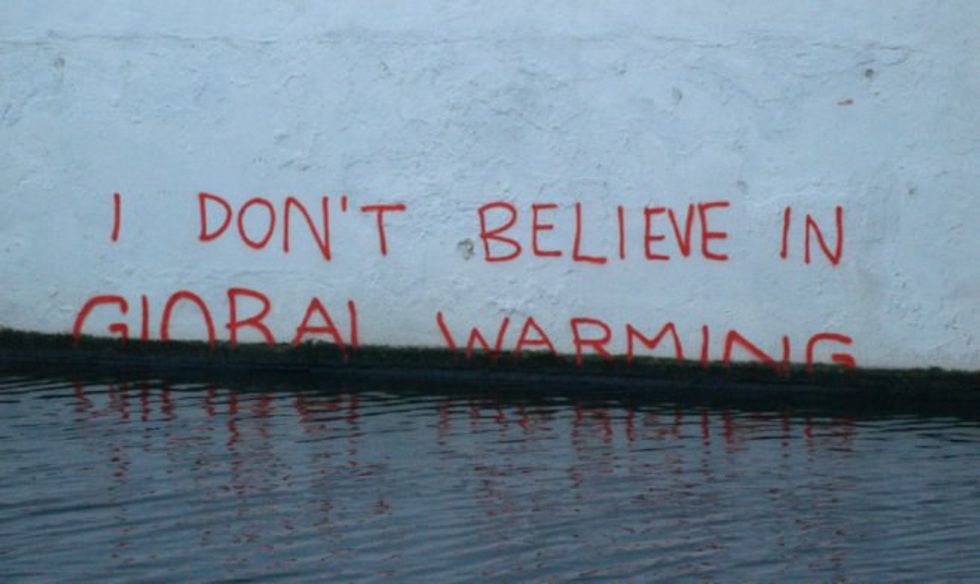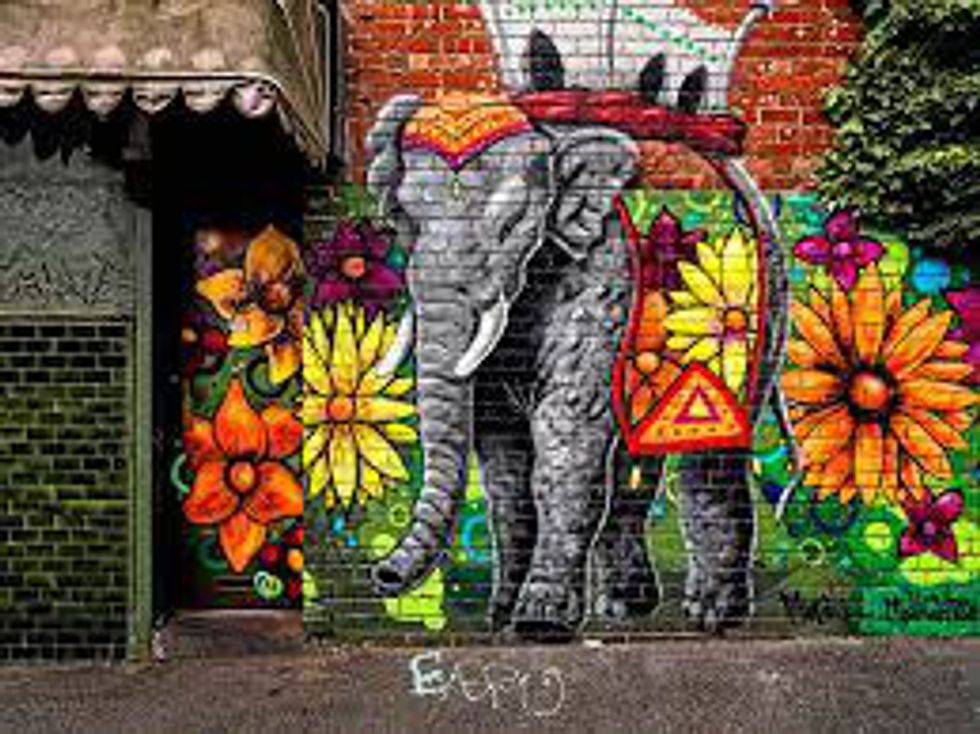Judicial opinion states that people charged with vandalism can be fined from $500 to $25,000 along with restitution or repair payments, to the owner. This is how police forces and governments see graffiti, murals and street art. They also see it generally as a protest usually against government or order. As for the public’s opinion, graffiti is seen as either a free speech movement, or vandalism. So graffiti has been controversial for being considered vandalism. Though this stance of rebellion sparks many other ideas through art; many graffiti drawings are known for what is written or drawn which usually relates to controversial issues like global warming, politics, capitalism and many more. It gives a voice for protest and rising issues. Graffiti and mural art advertise a perspective through visual and emotional appeal, just as most forms of art do. Well known graffiti artists like Banksy and Lady Pink also use surroundings as a way to promote their messages. The picture below shows an environmental statement by Banksy in London.
Google has also partaken in spreading the influence of graffiti through its Google Street Art project. In the project, Google displays graffiti worldwide and explains the context and backgrounds of the art. It is a database for street art giving virtual tours and online exhibitions. Widely used as a learning tool, Google Arts & Culture promoted the project through partnerships with many cultural organizations such as Rainlab. Google Street Art is also in the app store for Androidware.
Graffiti is seen to be a silent rebellion due its public settings as well. The ‘silent’ part stems from its form of expression based on strategic placement which allows nearly everybody crossing by it to glance. Though it’s easy to see how graffiti is considered vandalism, it can send a strong message quickly. In many surveyed stereotypical senses, graffiti is commonly known to be in slum areas surrounding a major city associating the act with criminal or gang activity; however, Timothy Werwath states that ‘about half of the graffiti artists come from suburban middle class areas’ in his article ‘The Culture and Politics of Graffiti Art’. Also going against the stereotype, graffiti art is easily seen in suburban areas as well. Cities also gain character and a sense of uniqueness through the aesthetic value of graffiti art over the grey slabs of concrete. The eye-catching coloration of the image or writing gives much more to look at. We all live or have been in that urban concreted jungle, and I imagine it would be much more interesting where the walls are painted.






















